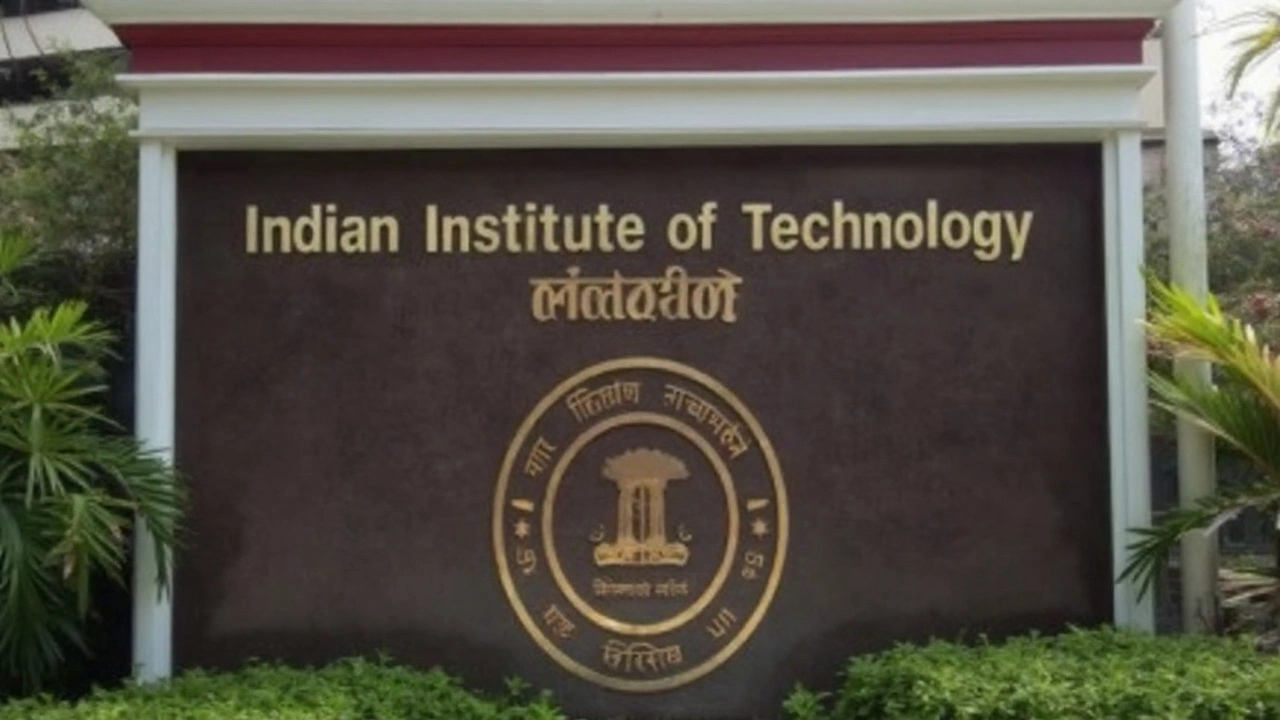Seats are limited, demand isn’t. Uttar Pradesh’s polytechnic race in 2025 packed lakhs of applicants into roughly 50,000 diploma seats, with around 40,000 in government institutions alone. The exam ran June 5–13 and results landed June 23. Now the part that really decides your future: how your rank translates into a real seat in a real college.
If you’re staring at your score and wondering what it means for a government polytechnic in Kanpur or Meerut, or whether a niche course can get you in with a higher rank, this breakdown is for you. We map cutoffs, ranks, course demand, and the choices that push you forward during counselling.
JEECUP 2025 at a glance: seats, cutoffs, and what your rank means
The 2025 cycle offers seats across government colleges, university colleges, government-aided private colleges, and private unaided colleges. Government institutes remain the first call for most candidates because of lower fees, stable infrastructure, and better placements. Private colleges widen the net, especially for mid to higher ranks, but you’ll need to be choosy about quality.
On scores and cutoffs, here’s the picture candidates have been working with for government polytechnics in 2025: General category aspirants are generally safe around the 200+ mark, while EWS and OBC see action between 160–180, and SC/ST around 140+. For context, the 2024 reference values were much lower (General 77.3, OBC 77, SC/ST 68.6). The year-to-year difference has a simple explanation: different reporting formats (raw scores vs normalized or scaled values) can make the numbers look worlds apart, even when the competitive reality is similar.
So what’s a “good” rank? It depends on the branch and the campus. High-demand branches—Computer Science, IT, Electrical, Mechanical, Civil—close earlier. Specialized branches like Food Technology, Leather Technology, Paint Technology, Plastic Mould Technology, and Textile Technology typically accept higher ranks because fewer candidates prioritize them and capacity is spread out.
Government Polytechnic, Kanpur, a bellwether for demand, shows how quickly top seats close (2023 closing ranks):
- Electrical Engineering: Open 1, EWS 584, SC 787, ST 1716
- Information Technology: Open 9, EWS 13079, SC 1804, ST 21271
- Mechanical Automobiles: Open 24, EWS 3288, SC 3843, ST 28265
- Civil Engineering: Open 44, EWS 1193, SC 1300, ST 1571
Notice the pattern. Open rank closes fast in core branches. Category ranks remain competitive but tend to stretch further. IT can sometimes keep an odd spread because of shifts in preference and seat distribution.
If your rank sits between 75,000 and 1,00,000, you still have meaningful options—often in specialized courses or at mid-tier campuses. Recent closing ranks point to opportunities like:
- Government Polytechnic, Sardhana (Meerut): Mechanical Engineering (Production) – around 93,975
- Government Polytechnic, Chunar (Mirzapur): Food Technology – around 79,999
- Government Polytechnic, Beeghapur (Unnao): Leather Technology – around 85,140
- Government Polytechnic, Rajgarh (Mirzapur): Mechanical (Refrigeration & AC) – around 86,616
- Government Polytechnic, Jansath (Muzaffarnagar): Mechanical (Production) – around 99,942
That tells you a simple truth: branch flexibility opens doors. If you’re fixed on CSE or Electrical at a big-city government college, you’ll need a tight rank. If you’re open to Food Technology in Mirzapur or Leather Technology in Unnao, the same rank stretches a lot farther.
Course demand in a nutshell:
- Lower closing ranks (tougher entry): Electrical, IT, Computer Science and Engineering, Civil, Mechanical
- Higher closing ranks (easier entry): Food Tech, Leather Tech, Paint Tech, Plastic Mould Technology, Textile Tech
Private colleges remain a viable lane if government seats don’t fall in place. They generally accept higher ranks, but quality varies. Check approvals, labs, workshop exposure, faculty stability, and past recruiters. Talk to current students if you can. A better private college can beat a weak one on outcomes, but a good government polytechnic still wins on value for money most of the time.
There’s also a post-graduate diploma lane within the same ecosystem. The council lists options like PGDCA, PG Diploma in Marketing and Sales Management, PG Diploma in Fashion Technology, PG Diploma in Hardware and Networking, along with industry-oriented diplomas such as Hotel Management and Aircraft Maintenance Engineering. Cutoffs are tighter in popular metro campuses; specialized programs may have more breathing room.
Money matters too. Government polytechnics typically charge far less per year than private colleges—often a fraction. Private fees can run several times higher, especially in tech-heavy courses. Add hostel, mess, and transport, and your total cost can swing widely. This is where placement history, internship pipelines, and lab strength should drive your decisions, not just brand names.
How to use your rank during counselling
The counselling process is where ranks turn into seats. The flow is predictable: registration, fee payment, choice filling, mock/first allotment, freeze/float/slide movement, document verification, institute reporting, and then further rounds or spot admissions if seats remain. You’ll need a priority list that blends ambition with realism—and you’ll need to keep adjusting after each round.
A practical strategy by rank band:
- Rank 1–10,000: Target top government polytechnics first. Lock core branches (CSE/IT/Electrical/Mechanical/Civil) in big-city campuses. Use a few “stretch” picks up front, then backstop with strong but slightly lower-demand branches or nearby cities you can actually attend. If hostel is critical, push colleges with known residential capacity higher.
- Rank 10,001–50,000: Blend ambition and safety. Consider core branches in tier-2 government colleges or allied branches (e.g., Mechanical Automobile, Refrigeration & AC) in stronger campuses. Government-aided colleges can be smart picks here—lower fees than private, better labs than many new institutes.
- Rank 50,001–100,000: Prioritize specialized courses in government colleges and keep government-aided options in the mix. Add private colleges you’ve vetted for approvals, labs, and placements. A solid specialized branch in a stable campus often beats a stretched core branch in a weak campus.
- Rank 100,001+: Keep your list wide and flexible. Include specialized branches in government campuses, government-aided seats, and the best private colleges you can realistically access. Track later rounds and potential spot admissions. If you’re not satisfied, consider skill certifications, an apprenticeship, or preparing for a lateral-entry pathway next year.
Choice filling can make or break your outcome. Order matters. Put your dream options at the top, but don’t leave gaps—fill the middle with realistic choices and the bottom with safe bets. If you freeze a seat, you’re committing. If you float/slide, you’re keeping the door open for upgrades in the same or related branches.
Understand the seat matrix before you pick. Seats are split by category and subcategory. Your “open” (general) rank and your category rank can yield different results, and both are in play depending on availability. Urban campuses tend to close earlier. Morning shifts often go before afternoon/evening shifts. Newer programs might stay open longer even at popular colleges.
What moves cutoffs up or down?
- Location: City campuses see hotter demand.
- Branch pull: CSE/IT and Electrical crash early; specialized tech stretches longer.
- Infrastructure: Known labs and workshops attract stronger ranks.
- Placements: Old industry ties tilt choices, especially in manufacturing-heavy districts.
Shortlist smarter by mapping your non-negotiables first: branch, city, hostel needs, fees, commute. Then layer your rank reality on top of that. A 20-km commute to a better lab can be smarter than a nearby campus with thin workshops.
Private college filter you can use fast:
- Approvals and accreditation in place
- Labs, workshops, and machine hours per student
- Faculty continuity and lab technicians on duty full-time
- Internship tie-ups and last two years’ recruiter list
- Hostel safety and basic amenities (water, power backup, mess)
Documents you’ll almost certainly need at verification and reporting:
- Admit card, score/rank card
- Class 10/12 mark sheets and certificates (as applicable for the course)
- Category/EWS/OBC-NCL/SC/ST certificates in the prescribed format
- Domicile certificate (if applicable)
- Photo ID, passport-size photographs
- Receipt of counselling/registration fee
- Medical fitness certificate (if required by the institute)
If you’re torn between branch and campus, ask yourself a simple question: would you rather study your first-choice branch in a mid-tier college, or a second-choice branch in a top campus with better labs and placements? For most diploma careers, hands-on training, tools, and workshops matter enormously. A strong lab can beat a famous pin code.
Branch-specific tips:
- Computer Science/IT: Low closing ranks in city colleges. If your rank is borderline, look for IT at a strong tier-2 campus before compromising into a weak private option.
- Electrical/Mechanical/Civil: Wide campus availability, but quality differs in labs and on-site training. Old government colleges have an edge in machines and industry links.
- Specialized tech (Food, Leather, Paint, Plastic Mould, Textile): Seats run deeper. Check regional industry—local clusters often drive internships and jobs.
Mid-range rank playbook in practice (75,000–1,00,000): target government polytechnics that still open seats in specialized courses—like Food Technology in Chunar or Leather Tech in Beeghapur. Add mechanical variants (Production, Refrigeration & AC) in Rajgarh or Jansath. Keep a few vetted private colleges at the tail for safety.
Fees and value: Government polytechnics usually run at a fraction of private fees. Scholarships, fee waivers, and category benefits can further reduce the bill for EWS/SC/ST/OBC candidates. Private colleges vary widely—factor in hidden costs like transport and hostel. If a private offer relies on promises rather than lab tours and placement data, treat it as a red flag.
What if you get an allotment you don’t love? If the system offers float/slide, use it to keep hunting for an upgrade while holding your current seat. If there’s no upward movement after a couple of rounds, weigh the real-world trade-offs: Is the branch strong? Are labs credible? Can you switch fields later with add-on skills or certifications?
Key 2025 checkpoints you should not miss:
- Exam window: June 5–13, 2025; results released June 23, 2025
- Approx. 50,000 total seats; about 40,000 in government polytechnics
- Government-college score comfort zones: General 200+, EWS/OBC 160–180, SC/ST 140+ (indicative)
- Top-closing clusters: CSE/IT/Electrical/Mechanical/Civil in city campuses
- Deeper seats in specialized tech programs across districts
One last sanity check: normalize expectations across years. 2024’s lower-looking marks and 2025’s higher thresholds don’t mean the competition changed overnight—reporting formats do. Your rank tells the real story. Use it to build a ladder of choices: top dream picks, realistic government options, government-aided safety nets, then the best private backups you can verify.
It sounds like a lot, but the playbook stays simple—know your rank, know the seat matrix, fill choices in smart order, and keep your options open across rounds. If you stay flexible on branch or location, your odds improve. If you’re targeting a narrow set, fill the list deeply and be ready to wait through more rounds. That’s how candidates convert scores into seats every cycle—including in JEECUP 2025.

